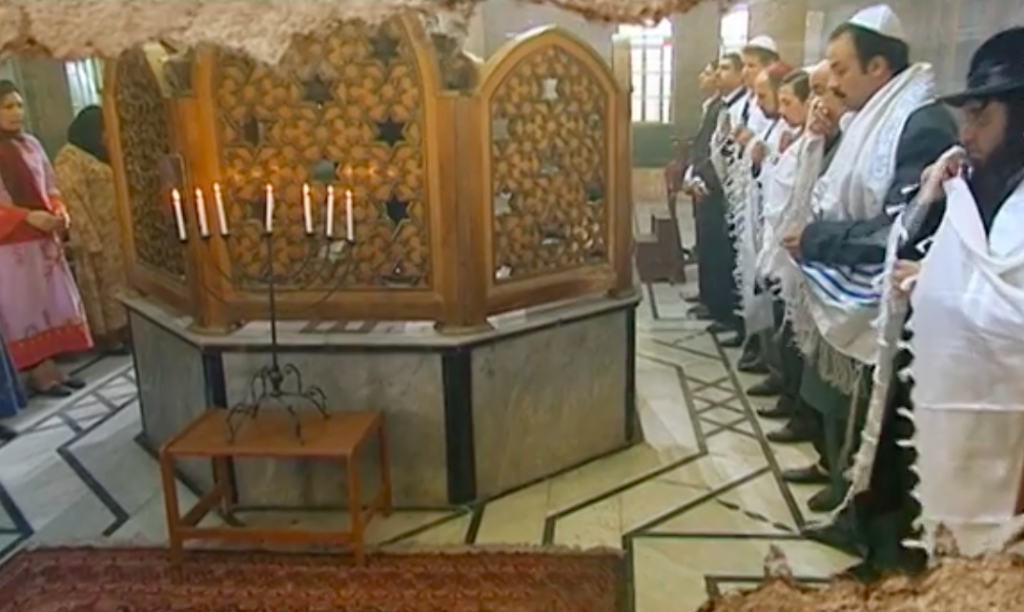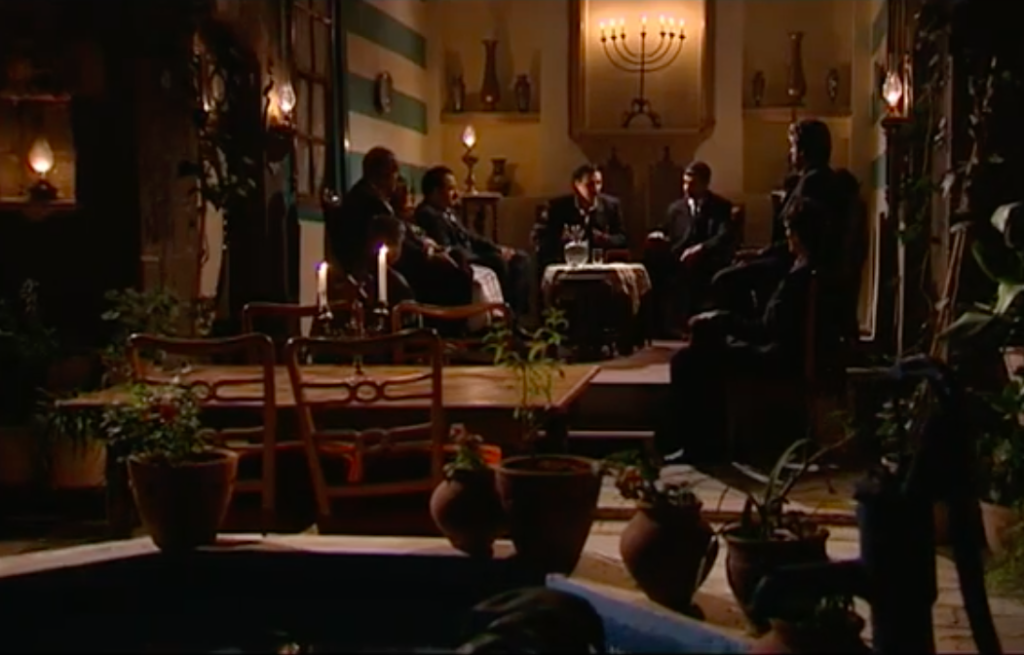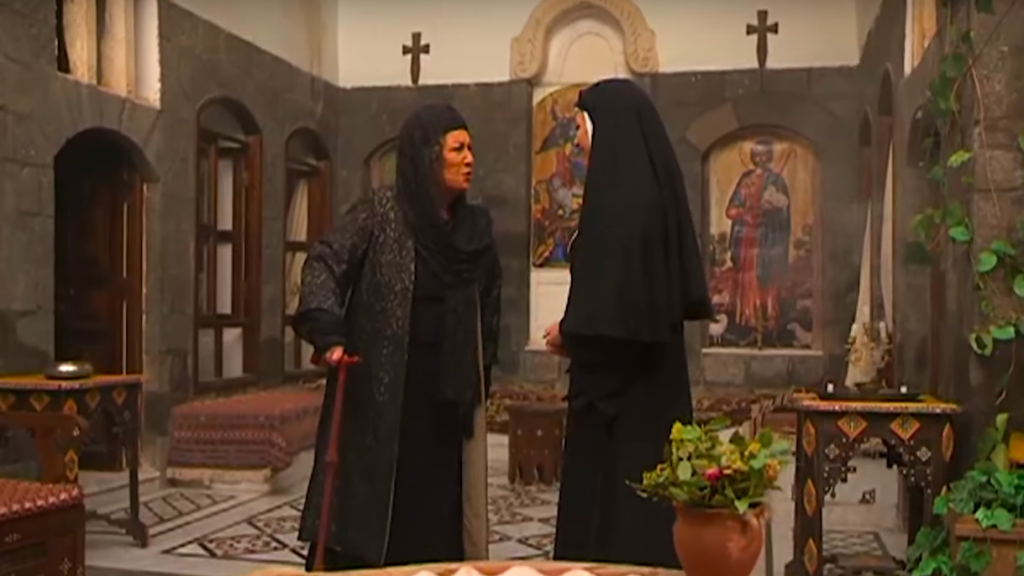1. ‘Lūlū al-ʿAṭār and Nīnā Zlayṭa are Jews, our neighbor Līzayt Lāṭī is also a Jew, the lady here is a Muslim, and I am a Christian – we all live here happily together’.1 With these concise words, the Damascene Christian lady Mārī sums up the state of the harmonious coexistence among Jews and various other religious communities in the documentary Yahūd Sūrya (The Jews of Syria), broadcasted on Syrian television in 1991.2 Through a series of interviews and reportages featuring members of the Jewish community in Damascus, the documentary illuminated a vibrant and distinct perspective on the lives of Jewish individuals intricately woven into the cultural tapestry of Damascene society.
2. Following the documentary’s broadcast, a discernible demographic transition has transpired. In less than a year, the Jewish populace in Damascus experienced a substantial decline. By the turn of the twenty-first century, they were virtually non-existent.3 The Jewish neighbors who were previously an integral part of Damascus’s society, as depicted in the documentary, were transformed into mere anecdotes and ephemeral reminiscences exclusively circulated among residents of Damascus who had lived alongside them or engaged with them.4

3. The impact of the documentary Yahūd Sūrya did not extend to stimulating the creative endeavors of Syrian screenwriters to construct narratives involving Jewish characters similar to those seen in the film or at least paralleled the surface-level depictions offered for Christians, Armenians, Druze, and Alawites in various dramatic and cinematic works. For years, while other religious groups found their place within scripts and storylines, the Jewish community remained noticeably absent until 2007, when the Syrian screenwriter Fu’ād Ḥumayra took the initiative to build a narrative that included two Damascene Jewish characters in the series al-Ḥuṣrum aš-Šāmī (Levantine unripe and sour grapes), which covers a historical period in the mid-eighth century and is considered the first Arab series to portray Jews beyond the context of the Arab-Israeli conflict.5
4. The portrayal of Jewish characters in Syrian drama series is a phenomenon that has not yet been recognised by researchers. I would like to give here a few examples that show why it is an excellent source for understanding the perception of minority communities in modern Middle Eastern societies and the causes of changes in this perception.
5. The inclusion of Jewish characters for the first time was a challenging task. It required navigating delicate socio-political terrain, considering the sensitivities surrounding historical events and the nuanced perceptions of the Jewish community within Syria. Before al-Ḥuṣrum aš-Šāmī, Arab audiences were not accustomed to seeing Jews outside the framework of Israeli soldiers. Earlier, the Syrian series, ʿĀʾid ilā Ḥayfā (Return to Haifa), and at-Taġrība al-Filasṭīnīya (The Palestinian Alienation), had helped to consolidate this perception.6
6. Consequently, questioning and correcting this stereotype was a challenging endeavor. Yet Syrian drama rose to the occasion by shattering this preconceived notion. The introduction of Damascene Jewish characters in the series al-Ḥuṣrum aš-Šāmī became the start of a new trend in Syrian drama, as numerous productions began to delve into narratives centered around the Jewish community of Damascus.
7. We can now ask how this change in the portrayal of Jewish characters relates to the social, political and economic context of the time. The emergence of Jewish characters in Syrian drama after a prolonged absence marks a significant shift in the storytelling landscape, unveiling a new chapter in portraying minority communities within Syrian narratives. For years, the absence of Jewish characters in Syrian drama series or even films reflected a societal silence or deliberate omission, perhaps influenced by political tensions, historical narratives, or a collective unwillingness to address the complex relationship between the Jewish population and the state.

8. The predominant recurring theme emphasized throughout the various series was the dynamic of Jewish coexistence amidst the diverse sects within Damascus. The theme of coexistence took notably different forms in relation to the political situation in Syria. When the political and security situation in Syria was stable, the issue of coexistence was not dealt with in any depth. The series al-Ḥuṣrum aš-Šāmī is one example for that. Coexistence was portrayed within narrow confines, allowing for the emergence of stereotypes related to religious discrimination. As soon as the first signs of the Syrian crisis appeared, however, the screenwriters modified the dialogues in Ṭāliʿ al-Fiḍḍa (Silver Stone Water Tank), for example, to suit the prevailing conditions. When the crisis intensified, the portrayal of peaceful coexistence appeared embellished and exaggerated as was also the case in the series Yāsmīn ʿAtīq (Old Jasmin) and Bawāb ar-Rīḥ (Gates of the Wind). We can confidently state that the screenwriters’ primary responsibility in these series was to adapt the storylines to convey messages aimed at unifying the local community, urging Syrians of all backgrounds to come together.

9. The documentary Yahūd Sūrya broadcast in 1991 provided a rare glimpse into the vibrant Jewish community that was once an integral part of Damascene society. The poignant words of the Damascene Christian woman, summing up the harmonious coexistence among Jews and other religious groups, stood in stark contrast to the dramatic demographic shift that followed.
10. While the documentary remained the sole media testimony to the lives of Damascus’s Jewish population until 2007, the subsequent inclusion of Jewish characters in Syrian drama series marked a significant shift in the portrayal of minority communities. Syrian screenwriters tried to navigate the delicate balance between historical context and contemporary realities, striving to foster a message of unity and coexistence amidst diversity.
References
- Quoted from: “2017 | وثائقي نادر | يهود سوريا | سلسلة اليهود حول العالم”, channel: Darryl Buford, uploaded: 13 August 2017, URL = https://youtube.com/watch?v=jJl45onuY6U&si=ZNwyRSs13RnWtOok, last accessed 26 May 2025. ↩︎
- No Arab television channel had featured a comparable documentary until 2001 when an installment of the al-
ʿAyn al-Muǧarada (Unaided Eye) programme showcased an episode dedicated to the Jews of Yemen. See: “Documentary “Jews of Yemen” 2001 وثائقي “يهود اليمن””, channel: Diana Moukalled, uploaded: 17 June 2013, URL =
https://www.youtube.com/watch?v=MK08QbkacTo, last accessed 26 May 2025. Subsequently, in 2011, Tunisian television broadcasted a documentary shedding light on the lives of Jews inhabiting the Tunisian island of Jerba: “يهود تونس وثائقي من الارشيف”, channel: editoTN, uploaded: 20 August 2023, URL = https://www.youtube.com/watch?v=yveMhTFbDgk, last accessed 28 May 2025. These two documentaries encompass interviews with Jews who resided or/and still reside in their countries of origin. To delve deeper into Egyptian documentaries showcasing Arab Jews in Israel, Europe, and North America, see Najat Abdulhaq, “Dissenting Narratives – The Figure of the ‘Arab Jew’ in Contemporary Arabic Literature and Film”. In: Susanne Zepp et al. (eds), Disseminating Jewish Literatures: Knowledge, Research, Curricula, (Berlin and Boston: De Gruyter, 2020), pp. 53–68. DOI: https://doi.org/10.1515/9783110619003-008. ↩︎ - Itamar Rabinovich, The Brink of Peace: The Israeli-Syrian Negotiations (Princeton: Princeton University Press, 2009), 16. Following the Madrid Peace Conference in 1991, President Ḥāfiẓ al-Asad removed
previously imposed travel restrictions on Syrian Jews, resulting in a substantial migration. A short video published by the Hebrew University of Jerusalem addresses the migration of a group of Syrian Jews to
Israel via New York in the mid-1990s: “The Spielberg Jewish Film Archive – Up Out of the Land of the North”, Hebrew University of Jerusalem, 2 November 2011, URL = https://www.youtube.com/watch?v=_MXvuNl27do, last accessed 26 May 2025. ↩︎ - To gain further insight into the Syrian Jewish community you can Explorer the recent report of DW: https://www.dw.com/ar/بداية-جديدة-يهود-سوريا-يرغبون-في-إحياء-إرثهم-بعد-انتهاء-الحرب/a-71703686, last accessed 28 May 2025. ↩︎
- See: “مسلسل الحصروم الشامي الجزء الاول”, channel: حـسـن / sh3_a66, uploaded: 30 November 2021 (and later), URL = https://youtube.com/playlist?list=PLVpbEgQuGptzi9Za9dV1ZV6am4UI-DNV6&si=egETkWDqTb502_mk, last accessed 26 May 2025. ↩︎
- ʿĀʾid ilā Ḥayfā was an adaptation of Ġassān Kanafānī’s literary work, Return to Haifa, retaining the same title. At-Taġrība al-Filasṭīnīya holds significant acclaim within the Arab world, amassing numerous prestigious Arab awards and enjoying extensive broadcasts across multiple Arab channels. Notably, select episodes of this series, available on YouTube, have surpassed 2.4 million views. Both television series were
created in 2004. See:
https://web.archive.org/web/20200909145728/https://www.albayan.ae/five-senses/2008-11-10-1.690928; https://www.bbc.com/arabic/articles/cyj2wk74k1mo; both last accessed 28 May 2025. ↩︎
Ella Christina Ayoub is a doctoral candidate at the Institute for Near and Middle Eastern Studies at Ludwig-Maximilians University Munich. Her research focuses on the portrayal of Jews in contemporary Arab literature, films, and television drama series, as well as their representation on social media. She also has a keen interest in the history and literature of Qaraite and Rabbanite Jews in the Islamic world and the Arabic translations of the Bible.
Suggested Citation: Ella Christina Ayoub, “The Portrayal of Jews in Syrian Television Drama Series”, Munich Research Centre for Jewish-Arabic Cultures Blog, 28 May 2025, URL: https://www.jewisharabiccultures.fak12.uni-muenchen.de/the-portrayal-of-jews-in-syrian-television-drama-series/. License: CC BY-NC 4.0.

